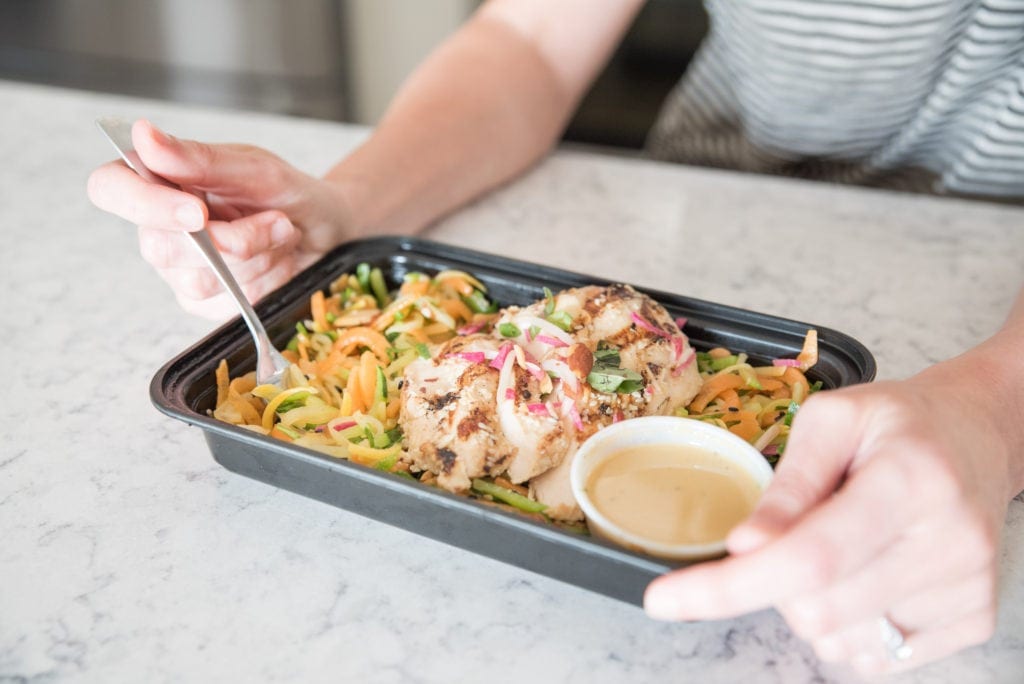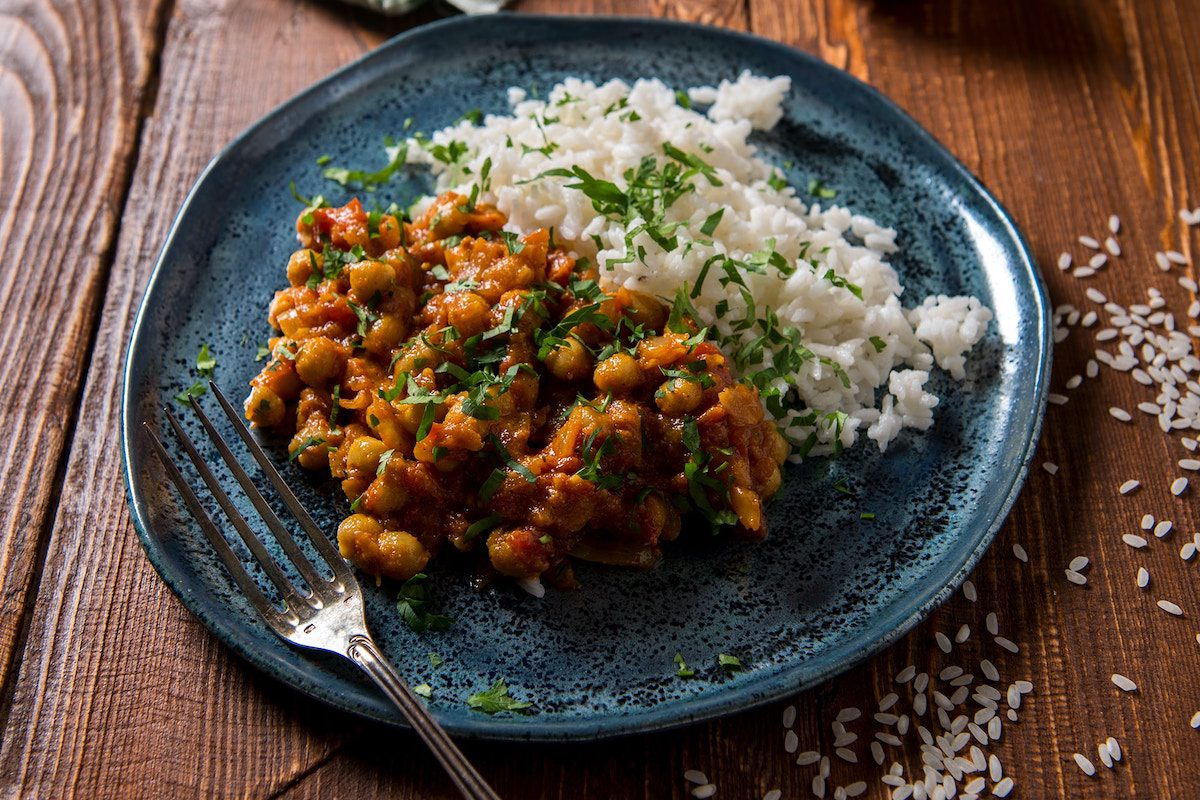The Must-Know Benefits of These Three Trendy Diets
[Disclosure: This post is a part of a sponsorship with Kitchfix. As always, we only talk about the places, people, things and experiences we truly love.]
You’ve seen the Instagram posts of perfectly proportioned meals, carefully placed in matching Tupperware containers that magically haven’t lost their lids yet. Yes, these aesthetically-pleasing shares are the telltale sign that a friend of yours is the latest to follow a trendy diet, like the keto diet or the Paleo diet.

But what the Instas and their hashtags don’t tell you are the actual benefits of following one of these nutritional plans, or whether that type of eating is right for you and your goals in the first place. We talked to Kitchfix store manager and registered dietitian Katie DeBoo to learn the real-life, scientific benefits of the ketogenic, DASH, and Paleo diets, plus how to know whether they’re right for you.
The Ketogenic Diet
One of the buzziest words in the health industry today, a ketogenic diet is high in fat, moderate in protein, and extremely low in carbs. How high is high and how low is low? According to DeBoo, “less than five percent” of your daily caloric intake will come from carbs, while about 20-25 percent comes from protein. The rest, she says, comes from fat (although she notes that individuals’ plans will be different depending on their body composition and goals).
Following a nutritional plan in which your meals are mostly fat sounds counterintuitive, but according to DeBoo, the goal of a ketogenic diet is to force your body into ketosis, which is when your body gets energy from fat rather than carbs (hence, the almost-no-carbs part of keto).
If you can achieve ketosis, you become a fat-burning machine, which can aid weight loss as you burn your body’s stores of fat rather than carbohydrates. In addition, keto lovers point to reduced inflammation, higher energy levels, and balanced hormones as reasons to try the diet.
Plus, DeBoo points out, the keto diet “gets people out of their traditional Western food rut, flipping things over and giving them a fresh look” by limiting highly processed convenience foods and forcing the ketogenic dieters to rely on more natural food sources.
You Might Try Keto If…
You have chronic migraines, sleep disorders, chronic pain from inflammation, or a hormonal disorder like polycystic ovarian syndrome (in fact, following a ketogenic diet has successfully been used as a way to reduce seizures in people with epilepsy).
However, a word of caution from DeBoo: a ketogenic diet is notoriously restrictive, and ketosis is hard to achieve; in fact, the ketogenic diet has mostly been used in controlled hospital settings before becoming the trendy diet we know today.
In the face of such restriction, ketogenic dieters might find themselves reaching for processed meats and cheeses, which technically fit the parameters but aren’t helping your body the way whole, natural foods would.
“Everybody’s body is different, and what works for one individual might not work for another,” advises DeBoo. “I’d recommend working with a multidisciplinary team — doctor, dietitian, and holistic doctors — to make sure the ketogenic diet fits your lifestyle and goals.”
Intermittent Fasting
Okay, so not technically a diet in that it doesn’t restrict what you can and cannot eat — instead, intermittent fasting (or IF) regulates the window of time in which you take in your calories. For example, you may choose only to eat from 1 pm to 10 pm every day, effectively “fasting” overnight and through the morning until breaking your fast at 1 pm. There are several variations of intermittent fasting, but the most popular method involves a 16-hour fast and an eight-hour feeding window.
“IF works on a cellular level by helping rid the body of old cells through the process of apoptosis and remove harmful waste from healthy cells known as autophagy,” explains DeBoo. “It’s been shown to be beneficial for people with cancer and Alzheimer’s in this respect.”
Research has shown that intermittent fasting can help with weight loss without causing feelings of restrictions; after all, you’re allowed to eat whatever you want within your eating window (although some variations of intermittent fasting encourage higher protein and generally nutritious diets). Plus, you’re not required to count or restrict your calories at all, which might help make fasting more sustainable in the long run.
Outside of weight loss, intermittent fasting can reduce inflammation and resting heart rate, while improving the cardiovascular system. It may also reduce the risk of Type 2 diabetes and even prevent cancer.
You Might Try Intermittent Fasting If…
You’re a big believer in moderation and don’t want to be tied to calorie counting for weight loss. Intermittent fasting is a great option for those seeking a balanced, low-maintenance eating plan that allows you to eat what you want.
“IF is also popular in the fitness community,” shares DeBoo, “for helping maintain muscle mass while losing fat and reducing inflammation in the body.”
The Paleo Diet
Eat like a caveman would — that’s the Paleo diet in a nutshell, says DeBoo. You’ll eat lots of lean protein, fruit, vegetables, nuts, seeds, and oils, while avoiding dairy, grains, legumes, refined sugar, and processed foods.
“The whole focus is on eating minimally refined whole foods, as close to the source as possible,” DeBoo explains. “You’re basically just peeling, cutting, and cooking, not taking out nutrients or adding chemicals, just keeping it simple.”

Inherent in the Paleo diet is a total lack of preservatives and additives, which would normally be added to your food to keep it fresh for longer. That’s why companies like Kitchfix that provide heat-and-eat Paleo meals cap their shelf life at four days — to ensure you’re eating the freshest, most delicious meal possible.
The beneficial side effects of a Paleo diet can be that you’re naturally avoided processed foods and most added sugars, in favor of real, whole foods “whose ingredients you can understand and pronounce,” says DeBoo. “You’re getting back to the basics and not overcomplicating food or relying on convenience items.”
DeBoo also notes that the Paleo diet is a great way to help naturally find a balance with your metabolism by giving it a bit of a reset, while eating foods that are high in vitamins, minerals, and antioxidants.
You Might Try a Paleo Diet If…
You’re trying to switch up your lifestyle and take a step in a better direction, according to DeBoo. Or, maybe you just want a simpler rule-of-thumb for remembering foods that you should be gravitating towards at the grocery store.

Many people with food allergies, intolerances, sensitivities, cancer patients, and those suffering from autoimmune or inflammatory diseases try a Paleo diet to avoid symptom-causing foods and promote healing within the body. One tip if you’re trying this diet for those reasons: keep a food journal noting what you’re eating and what symptoms you’re experiencing, if any. That way, you’ll eventually be able to narrow down which foods are causing certain symptoms and adjust your eating accordingly (with the help of a registered dietitian or nutritionist, of course).












